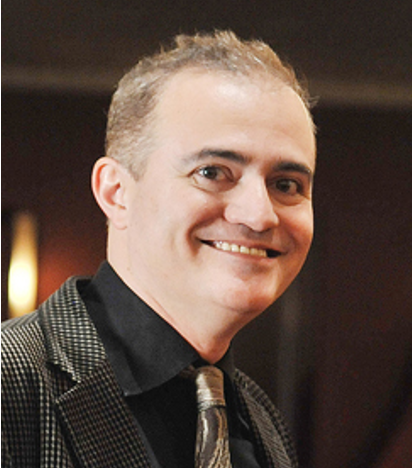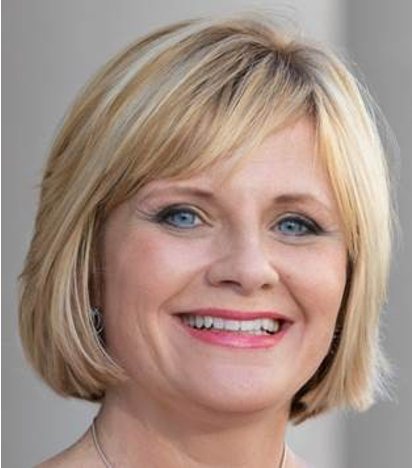Webinar Recap: Reopening Strategies: Lessons Learned from the Frontier
September 9 (Replay at end of page)
All over the world, arts organizations are struggling to navigate the constantly shifting environment and set the right strategy to reopen their doors. At the same time, some have started reopening already or are preparing to reopen significantly ahead of others’ plans. To provide valuable early lessons and perspectives for others, we invited three organizations who have already invited audiences back into their halls to share their reopening experiences. We were privileged to learn from Kim Noltemy, President and CEO of Dallas Symphony Orchestra, Joan Matabosch, Artistic Director or Teatro Real in Madrid, and Ethan McSweeny, Artistic Director of American Shakespeare Center in Staunton, Virginia.
A Look into Our Panelists’ Reopening Strategies
We kicked off our webinar by asking each of our panelists to provide an overview of how they reopened and the planning that went into their strategy.
Joan Matabosch, Artistic Director of Teatro Real in Madrid
Teatro Real reopened its doors on the first of July at 50% capacity and completed 27 performances of La Traviataacross the month. They welcomed more than 20,000 people back into their halls with no known virus cases associated with a performance. Joan said they spent the months of May and June preparing for the reopening by working in partnership with Teatro Real’s staff, local government officials, unions, and medical experts. They created an internal committee to manage the process and used a consultancy of medical experts to determine all the necessary safety protocols. All staff and orchestra members were continuously tested, and temperature checks were completed for both staff and attendees. They ensured the safety of musicians through social distancing, providing individual music stands for each musician, and installing panels between musicians where necessary.
During performances, all audience members were required to wear masks and they had staff directing the flow of traffic through the entrance and exit to avoid large gatherings. They also managed the crowds by indicating on each ticket which foyer audience members could access. They added additional restrooms and disinfected the restrooms after each use.
Ethan McSweeny, Artistic Director of American Shakespeare Center in Staunton, Virginia
Ethan noted that American Shakespeare Center (ASC) is located in a fairly rural community with low incidence of outbreak. As a small performing arts organization, they felt a duty that if it was possible for them to produce any sort of live shows, it was essential for them to do so and get their artists back to work. ASC brought back its musicians for rehearsal in June, previewed the performances in July, and opened in August. The organization brought its new work to life in three formats:
Indoors at Blackfriars Playhouse which is limited to 100 seats (1/3rd of capacity)
Outdoors at the Blackburn Inn where they etched 64 8x8 squares onto the lawn. They allowed either 4 individuals to have a picnic or two individuals to sit in seats in each square.
Live streaming online through both Marquee TV and their own Vimeo channel
They coined their reopening strategy “SafeStart” and decided to give the same name to their entire season. Ethan shared that they spent the months of May and June developing their protocols and considered it an iterative and ongoing process. ASC worked with local healthcare providers and epidemiologists to review their plans and assist in the grey areas. The core of their strategy was an emphasis on individual responsibility for collective safety. The organization’s performance group, which includes performers, crew, and stage managers, are effectively working in a bubble. They signed a collectively built isolation agreement that they self-regulate.
Kim Noltemy, President and CEO of Dallas Symphony Orchestra
Kim shared that The Dallas Symphony Orchestra just had its opening concerts this past weekend with an audience of fifty people and an orchestra of around 25 people. Like our other panelists, Kim has been working with a team of doctors to determine the safest way to get audiences back into their hall. In June, the organization put on four concerts with an audience of just 10-30 people and a small orchestra which gave them the opportunity to test their protocols and reopening approach. Kim said this test gave them the confidence to feel ready for their larger opening last weekend.
In terms of safety measures, Kim shared that the orchestra and stage crew are tested daily starting the day before rehearsals. Additionally, any staff member who will encounter an audience member (e.g., an usher) is tested the day before his shift. While the Texas governor has given arts organizations permission to open at 50% capacity, Kim has chosen to open with much smaller numbers. She shared that her musicians are particularly concerned about having too large of an audience. An epidemiologist they work with said that the risk of the virus spreading increases once the audience size goes over 100 people. This past weekend’s performance had 50 audience members, and they plan to host 75 audience members next week. Kim shared that they will continue to increase little by little if the cases continue to be stable or decline. If not, they will maintain the smaller audience size.
Clear and Visible Safety Protocols Give Audiences Confidence to Return
Both Teatro Real and the American Shakespeare Center have been transparent with their audiences about the efforts they have made to create a safe experience for their audiences. ASC includes summary of their protocols for both audiences and performers on their website, and Teatro Real created a YouTube video explaining what to expect as a visitor at Teatro Real.
Ethan acknowledged that some people will never feel comfortable, and for that reason they will continue to offer multiple formats to meet people’s comfort levels. He anticipates that they will need to continue socially distanced performances throughout 2021 and plans to continue their live digital performance offerings to stay connected and reach new audiences.
Audiences Willing to Comply with Safety Protocols
Many participants on our webinar asked if our panelists had experienced any pushback from audiences on adhering to their protocols. Joan shared that his audience was more than willing to comply, and they did not have any issues across the month of July. He felt audiences understood they were in this together and their compliance was necessary to be able to continue doing the performances. Ethan said they have had a few issues at ASC where people have taken off their masks. They printed small cards that ushers can hand to anyone who is not complying with the safety protocols to avoid a confrontational conversation. Actors also have the right to stop the show if they see someone who is not complying with the safety protocols. Kim said they have also had minimal issues thus far. She has noticed a few people who have taken off their masks upon getting to their seats, but they immediately put them back on when asked. They now make an announcement as people are arriving that masks are always required, even while in your seat.
Benefits of Performing Outweigh the Financial Impact
When asked about the financial impact of performing with smaller audiences, our panelists all agreed it was more than worth the cost to be able to produce art and give their artists the opportunity to work. Kim shared that typically only 30% of their revenue comes from earned revenue, which gives them a bit more wiggle room. Their goal was to figure out a way to deliver value to their subscribers who renewed and keep the critical support of their donors and core audience. She is optimistic that they will still be able to achieve 30% earned revenue in a post-Covid world. Interestingly, she noted that this is the first time in a long time where there is more demand than supply for tickets. The oversupply in the past has devalued their tickets, so she is hopeful that this could be a turning point. Kim also noted that there may be an opportunity to earn incremental revenue from digital in the future. While in the past a lot of DSO’s core audience had no interest in digital, they are now engaged and excited about it.
Joan emphasized how critical it was to reopen to give their artists work. He believed if closure continued much longer, there would be no artists left when they did open their doors. His perspective is that the fixed costs are there regardless of whether they perform. It is not the performances that are losing them money. Ethan shared similar views on the importance of reopening to give their company of artists work. ASC is very dependent on their box office – 75% of their income comes from earned revenue. While Ethan acknowledged there is no math where there is a financial upside of only selling 2/3rds of your inventory, he said reopening has allowed them to stay in the game. They were committed to investing their PPP loan in creating something that would allow them to survive.
Advice from Our Panelists
In closing we asked our panelists what advice they would offer organizations who have not yet reopened.
Joan emphasized the importance of starting with clear protocols that are defined by experts and specific to the activities you are doing. He also recommended being transparent with the public. “Trust them – they will collaborate with you to have the satisfaction of being back in the theater.”
Ethan’s advice was simple and direct – “operate with layers, alternatives, and flexibility.”
Kim said you must start with safety first because public trust will be lost without it. She also emphasized the importance of considering your own market situation – your audience, your city, your situation. Like Ethan, she said flexibility is critical - everything can change in a day. And finally, she advised that relationships are critical right now – this is a time to build relationships and trust.
Additional Resources
Across the past few months ABA has hosted a variety of webinars related to the topic of reopening. You can access these through the links below:






